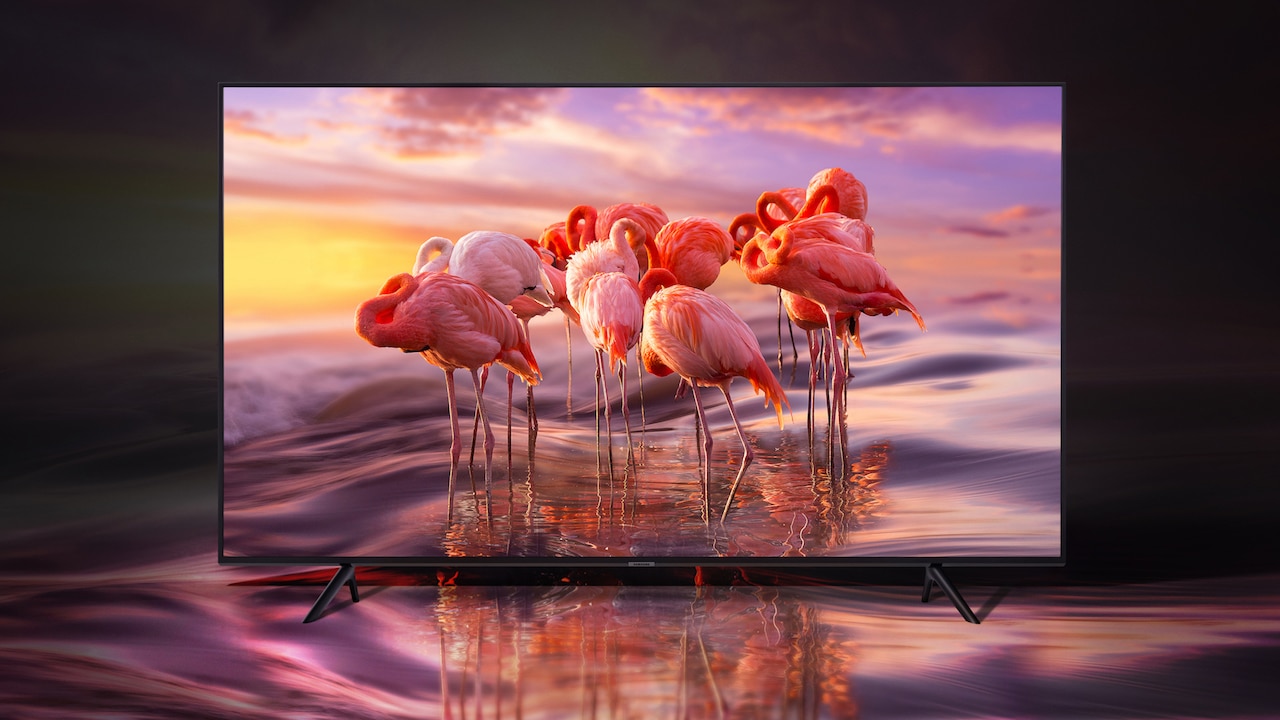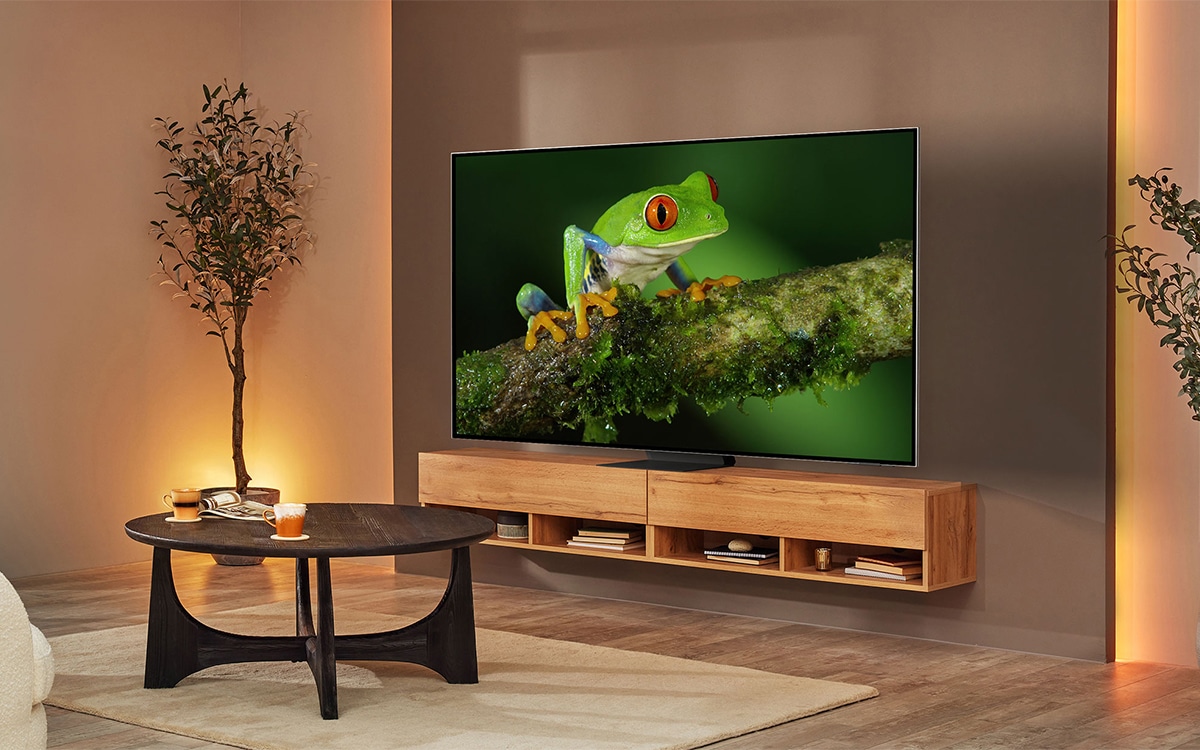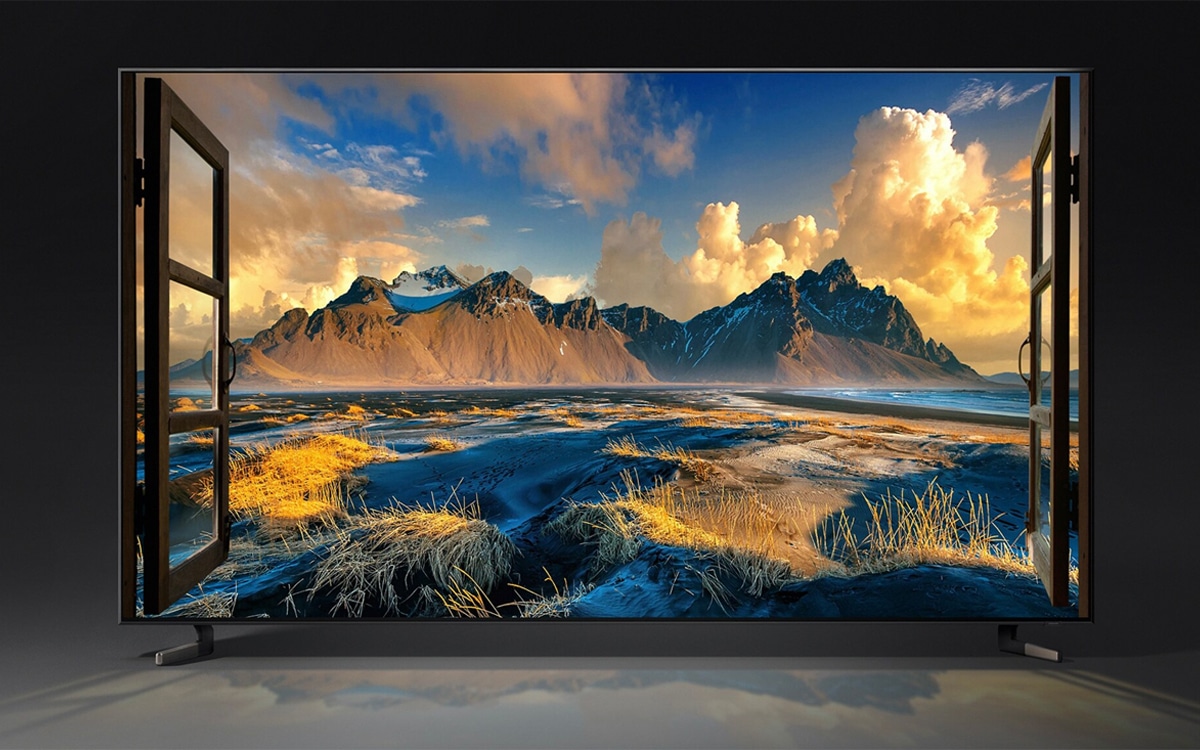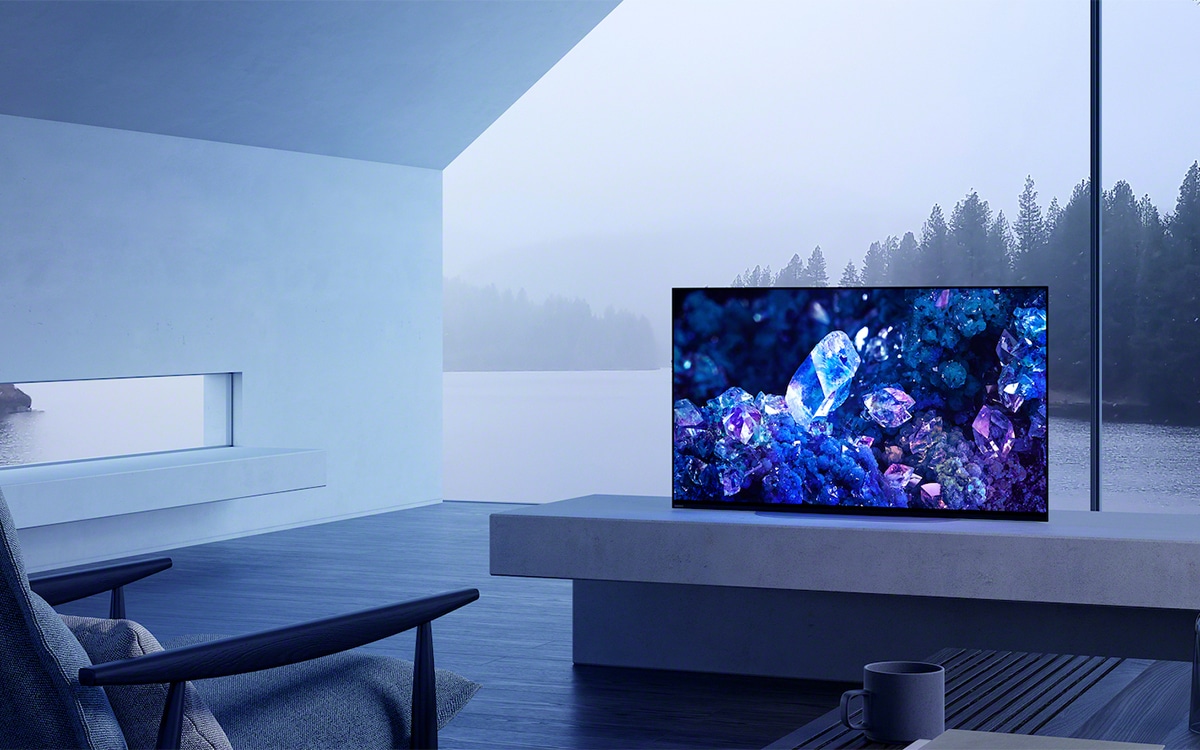Resolution, with regards to TV, refers to the number of pixels that are packed into a TV screen image. The more pixels there are, and the more they are packed in together, the clearer the image is.
There are numerous different resolutions to choose from across the TV market, from 1080p resolutions all the way to 8K TVs. However, because there’s so much choice, navigating the world of resolutions can sometimes feel like decrypting some ancient code. Unless you know what you’re looking at, it can be tough to make any solid decisions when it comes to TV resolution!
That’s why we’ve put together this definitive guide to TV resolutions. Below, we’ve catalogued an extensive bank of knowledge on TV resolutions. So you can keep up with even the most technical of TV resolution discussions! Let’s get started!
What Are The Most Popular TV Resolutions?
If you’re ever in the market for a new TV, resolution is one of the first things you will learn about any specific model. There are a few distinct TV resolutions that you’ll be presented with. Let’s take a look at them.
720p
With a pixel count of 1,280 x 720, a 720p TV represents the lowest end of the scale for HD TVs. It’s highly unlikely that you’ll come across any TV with a resolution any lower. Despite boasting a small pixel count, 720p is still a very solid HD resolution. It’s particularly great for small TVs.
On a smaller screen, such as a 32-inch TV or smaller, 720p is more than enough. The pixels will be packed together tight enough that you won’t be able to make each individual pixel out.
720p TVs tend to be some of the most affordable TVs on the market. Especially because these lower resolutions are normally accompanied by much smaller screen sizes.
1080p
1080p is often referred to as “Full HD”, and it’s not hard to see why. 1080p TVs have nearly double the number of pixels as 720p TVs. This makes them incredibly clear and vibrant to look at. The larger pixel count also means that 1080p images look great on larger screens, such as 43-inch TVs.
There is often some amount of confusion when it comes to 1080p. This is because of the existence of 1080i. 1080i TVs differ from 1080p TVs in terms of how they display content.
Instead of simply rendering images across all of the pixels at the same time, a 1080i screen interlaces the image. Two sets of horizontal lines alternate across the length of the screen to create the illusion of a single image. There’s a lot more technical info to it, but luckily, 1080i TVs do not really exist anymore. If you see 1080i online, just know it’s referring to a defunct technology!
4K
A 4K TV boasts an incredible 3,840 x 2,160 resolution. This means it boasts double the number of pixels as a 1080p TV. The 4K name directly refers to the number of horizontal pixels, being close to 4,000. This also applies to 8K, with the horizontal pixel density being around 8,000.
When 4K TVs were first introduced in consumer TVs it sent shockwaves across the industry. 4K resolutions allow for even greater realism, by making it even harder to make out individual pixels in an image.
Once again, 4K resolutions allow you to make the best of much larger TVs. At 4K resolutions, you can make the most of a 55-inch tv, 65-inch tv or even larger.
4K resolutions are currently the most popular. 4K TVs are becoming more and more affordable, and more and more content is being made available in 4K resolutions. This makes them a great investment!
You’re most likely to find 4K TVs when looking for new TVs, as opposed to other resolutions. 1080p and 720p TVs are very slowly being phased out. On the other hand, 8K TVs are still a relatively niche product for many. Speaking of…
8K
As implied by its name, 8K boasts a resolution that is double that of 4K. 8K TVs have a pixel count of 7,680 x 4,320. If you’re hoping to grab a TV with an 8K resolution, we’d recommend larger models such as 65-inch, 75-inch and above.
An 8K TV is still relatively new, so they are a little less common than 4K TVs. 8K TVs are still on the slightly more costly end of the spectrum.
Because 4K TVs are more widely adopted than 8K TVs, there is currently more 4K content available across the market than 8K content. If you want to save a little bit of extra money, then a 4K TV may serve you just right!
Can You Tell The Difference Between 4K And 1080p?
Absolutely. However, it’s much easier to tell the difference between the two display types on a screen of the right size. As we’ve mentioned previously, higher resolutions look much better on larger TV screens.
Let’s say you were to place two 55-inch TVs directly next to each other. The TV on the left is 1080p, while the TV on the right is 4K. At a distance, both TVs may look very similar. However, if you were to step closer to the two screens, you would quickly notice the difference. It would take only a few steps closer to the 1080p screen to make out individual pixels. On the other hand, you could get right up close to the 4K TV and still have trouble spotting the individual pixels.
1080p images appear stretched out and pixelated when they are displayed on screens that are too large!
Can You Tell The Difference Between 4K And 8K?
Once again, this comes down to the size of the screen. 8K resolutions are intended for the largest screen sizes on the market. Let’s say you wanted a huge 98-inch TV. A TV of this size would greatly benefit from an 8K resolution.
If you were to compare a 4K image to an 8K image on a 98-inch TV, then 8K would naturally win. At this screen size, 4K is more likely to appear stretched out and lacking in clarity. Even at such a screen size, it would still be difficult to make out the individual pixels of an 8K screen.
What Is UHD?
UHD is a term that very often trips people up. This is because it is so often closely associated with 4K and 8K resolutions. Many people often wonder whether UHD is another resolution entirely.
If you ever find TVs labelled as “UHD”, they are likely 4K or 8K. UHD simply refers to “Ultra High Definition”, a sort of buzzword used by manufacturers to advertise bolstered resolutions!
Instead, UHD simply refers to both 4K and 8K TVs together! This is because it stands for “Ultra High Definition”. It’s not a full technical term used to describe 4K and 8K displays. Instead, UHD is mostly used as a buzzword to entice customers into buying UHD TVs! If you see a TV being described as UHD, it’s because it either boasts a 4K or 8K resolution.

What UHD Content Is Available For 4K And 8K TVs?
Of course, there’s no point in having a UHD TV without also having a stable of content to make the most of the higher resolutions! Luckily, there is actually a wide selection of UHD content compatible with 4K and 8K TVs. Let’s take a look through some of the most popular options!
UHD Blu-Ray
When standard Blu-ray discs were first introduced to the market in 2006, they were met with immense excitement. With a Blu-ray disc, you could play the hottest blockbuster films, from the comfort of your home, at 720p and 1080p resolutions!
Blu-rays have since been usurped, however, by the 4K compatible UHD Blu-ray format! UHD Blu-rays present films in crisp and clear 4K resolutions. While you will need to purchase a compatible UHD Blu-ray player, it’s more than worth it. UHD Blu-rays are incredibly easy to use, and they’re great for budding cinephiles. Allowing you to build a physical collection of your favourite films.
UHD Blu-rays also help you to take advantage of improved sound technology. If you have a soundbar or an existing surround-sound setup, then UHD Blu-rays are highly recommended. The audio found on UHD Blu-ray discs is totally lossless, allowing you to experience sound as the studios originally intended!
There aren’t currently any 8K UHD Blu-rays available on the market. However, industry rumblings have suggested that 8K discs may be in the near future!
Netflix
Netflix was actually one of the very first platforms to allow for 4K content streaming. Unfortunately, in order to access 4K content on Netflix, you should ensure you have subscribed to the ‘Premium’ tier. This is the most costly subscription tier, but it helps you to make the most of your 4K TV’s resolution.
As soon as you have a compatible subscription, and you stream content on a 4K TV, it will automatically display in the highest possible resolution. Just make sure that you have a strong internet connection. Preferably with a bitrate over 2160.
Netflix does not currently offer 8K streaming.
Amazon Prime Video
As long as you have an Amazon Prime Video membership, you can stream 4K-compatible titles at no extra cost. This makes Amazon Prime Video an incredibly popular option for many 4K TV owners. Amazon Prime Video has a vast library of original titles, as well as a number of third-party titles, also available for 4K streaming.
Amazon Prime Video also offers users the opportunity to purchase specific titles that may not be offered for free as part of the service. These films can be purchased or rented at a number of resolutions, including 4K.
Unfortunately, much like Netflix, Amazon Prime does not currently offer any 8K content for streaming, or for purchase.
Disney+
Disney+ is one of the most generous platforms when it comes to 4K streaming. Without any need to upgrade your subscription, you can stream compatible titles in 4K. All you need is a compatible display! As soon as you pick a valid title, it will begin streaming in 4K to match your TV. Again, it’s best to ensure you have a strong internet connection to take advantage of 4K streaming.
Disney+ also offers Dolby Atmos sound and compatibility with other premium audio formats, at no extra charge. This means you can stream TV and film with crystal clear video, and room-filling audio!
Disney+ is one of the very best streaming services for UHD TV owners. Disney+ offers 4K content at no extra charge. Unlike other streaming services like Netflix. It also offers premium audio through Dolby Atmos!
Once again, Disney+ does not yet offer 8K content. As the industry moves towards producing content in native 8K, however, there is every chance that Disney+ has 8K compatibility in its future plans!
BBC iPlayer
BBC iPlayer is one of the most popular streaming platforms in the UK. And luckily, it’s certainly not lacking in the features department! Most content on BBC iPlayer is available in crystal-clear 4K! Unfortunately, like most streaming services, BBC iPlayer does not offer 8K streaming.
If you plan on streaming BBC iPlayer content, you will need to make sure you have a valid TV License. Without a valid TV License, playing BBC content can incur a very heavy fine!
YouTube
YouTube is one of the best repositories for UHD content to help you take advantage of your fancy new 4K or 8K TV. Best of all, it’s totally free to use. YouTube content is entirely user-curated, so there’s plenty of immense 4K and 8K content that will make your TV look just right.
Again, in order to access content at 8K resolutions, you will need to make sure you have a very solid internet connection. 8K streaming requires very high bitrates!
Gaming
Video Games become more and more powerful with every passing generation. With this greater power comes greatly improved graphics that better emulate real life. If you want these graphics to really shine, it’s worth playing in 4K resolutions. Luckily, most major consoles offer the ability to play in 4K, including the PlayStation 5, and Xbox Series X.
4K gaming is truly incredible, especially if you’re an avid gamer. Your games will appear more vibrant and immersive, and your gameplay experience will be far more satisfying. Whether you’re playing the latest triple-A open-world title, or you’re dominating online leaderboards, gaming is one of the best ways to make use of a 4K display!
Delving into some of your favourite digital worlds is one of the best ways to make use of a 4K TV. Most modern consoles offer 4K gaming as standard, so all you need to do is plug in and play!
The increase in resolution also makes it easier to stay in top form. With a higher resolution, it becomes much easier to make out individual details. In the heat of the action, this can truly mean the difference between victory and defeat!

Can You Improve The Resolution Of Content?
Unfortunately, not all content can be played in 4K or 8K resolutions. A vast amount of content is relegated to being displayed in 1080p, at best. This is often because the rights owners of the content have yet to upscale and remaster the content. As such, you may find that some older films and TV shows look a little stretched out on larger TV displays.
Luckily, most modern TVs actually come with automatic upscaling technology, which can increase the pixel count of your favourite content, in real-time. This is a technology found in most modern UHD TVs, though it is often listed under different names.
These technologies often leverage AI to improve real-time optimisation. When you use upscaling on your TV, it will analyse content, as it plays, to see which areas of the image can be enhanced. The TV will often target highly pixelated areas of the image and increase the pixel density, to create a smoother appearance.
The best upscaling technologies can learn not just from each frame of your content, but also the wider context of it. The technology will consider the other frames that surround each frame. This helps to ensure that there is consistency across the upscaling job.
Some TVs can also leverage AI to improve colour depth in a chosen image. By doing this, a TV can improve how vibrant an image looks. It does this by learning from the existing colours of the content and using that information to add extra colours that fit the image. This can help to greatly enhance the clarity of a piece of content.
Is It Worth Using AI Image Upscaling?
Absolutely. If your TV offers any kind of image upscaling, it’s totally worth making use of. Upscaling can be used on absolutely any piece of content, because the process is handled entirely on the front end, by the TV itself.
It’s worth noting that AI image upscaling isn’t always perfect. It relies on the AI to essentially guess what it feels is right for the content at any given moment. This might not align directly with the creator’s original vision. Thus, it may not be best for the most ardent of film fans looking to enjoy films as they were intended to be seen.
Upscaling also works better with content of a higher resolution. For instance, if you are upscaling to 4K, it’s best to perform it on 1080p content, rather than 720p content. The AI will not have to do as much “guessing”. If you’re upscaling to 8K, then it’s best to use a 4K video as the source.
What Is HDR And What Relation Does It Have To Resolution?
Another term you’re likely to come across when looking for TVs is “HDR”. This abbreviation is often used as a selling point to draw people into purchasing specific TVs. However, many people often wonder what exactly the abbreviation refers to, and what makes HDR so special.
HDR is a technology that allows TVs to enhance a wider range of colours and brightness levels. This means that content on an HDR TV appears much more vibrant than on a non-HDR TV. By enhancing the range of colours and brightness levels, a TV can create greater contrast in every image.
HDR technology works perfectly in tandem with 4K and 8K resolutions. The increased pixel density, paired with the increased colour range allows a TV to make full use of every single inch of the screen.
HDR specifically is a type of video format, so, unfortunately, not every piece of content can be played with the benefits of HDR. In order to play HDR content, you will first need to make sure that your content is HDR, and that your TV is HDR compatible.
HDR is a special video format that allows your TV to create more colours and specific brightness levels. This can lead to images with improved clarity and depth. It’s worth making use of!
The problem is that there isn’t only one kind of HDR. There are actually different varieties of HDR and similar premium video formats. It can be easy to confuse them with one another. So let’s go through some of them.
What Are The Different Types Of HDR?
HDR10+
HDR 10+ is actually not too different from standard HDR. However, it does differ in terms of how much brightness it provides. TV brightness levels are measured in “Nits”. The average amount of nits in a standard HDR TV is around 1,000. An HDR10+ TV, on the other hand, is able to produce a massive 4,000 nits of brightness!
HLG
HLG is a premium video format developed in collaboration between BBC and NHK in Japan. It’s a format still very much in its infancy, so you’re not likely to find it in any TVs on the market. However, if the technology proves fruitful, then it’s likely that it could be implemented in TVs moving into the future!
Dolby Vision
Dolby Vision is a highly specific premium video format offered by the Dolby company. It’s easily one of the absolute best on the market and allows for an unparalleled level of detail.
Dolby Vision pushes HDR to its absolute limits. It enhances the colour palette massively and even adds a number of extra brightness levels. In fact, Dolby Vision offers a brightness range up to 4,000 nits.
Unfortunately, not every TV is able to take advantage of the benefits offered by Dolby Vision. Dolby Vision is only available upon exclusive license to TV manufacturers. Thus, only a small number of TV models come with Dolby Vision compatibility built in.
However, if your TV does support Dolby Vision, you’ll be pleased to know that Disney+ offers a number of titles in the format!
Is It Worth Buying An HDR TV?
Absolutely. A massive amount of content is now developed with HDR in mind. Professional movie studios are able to film using special HDR cameras, and games are even being developed with HDR compatibility in mind.
HDR TVs are very common, and while they might cost a little bit more than usual, they’re worth springing for. With an HDR TV, you can make the absolute most of your TV’s resolution and enjoy content that looks its very best.
It’s worth taking your time looking through options when it comes to HDR TVs. There are a number of different premium video formats, so it’s worth taking a look to see which format each TV is compatible with.
What Size UHD TV Should You Buy?
We’ve mentioned a few times throughout this guide that 4K and 8K resolutions look greater on larger screens. With more screen size, there’s much more space for your TV’s pixels to spread out.
We’d generally recommend against getting a UHD TV below a specific size. When a TV has a much smaller screen, the pixels of UHD resolutions need to be tightly packed together. This means that the resolution is largely put to waste. If you’re looking for a 32-inch TV, for instance, you might benefit more from buying a 1080p model.
If you’re hoping to buy the largest TV available, there’s no reason not to opt for the highest resolution too. 8K resolutions allow you to make the absolute most of your TV’s huge screen size.
Just make sure to be reasonable when choosing the perfect TV size. It’s very easy to end up grabbing a TV that’s far too big for your room. A TV that’s too big is much harder to watch, as you’ll need to strain your neck just to get a good view of the screen. To ensure you get the right screen size, you should make sure you’re able to take in the full size of the screen without having to move your head. To ensure this, you’ll have to make sure that there’s enough floor space in your room.
Do You Need A Specific Type Of HDMI Cable?
Of course, if you want to enjoy content at 4K and 8K resolutions, you’ll need to have a compatible screen. But in order to get UHD content to display on a UHD TV, you’ll need to ensure you have the right connection!
Towards this end, you’ll have to grab the right HDMI cable type. It’s easy to assume that a basic HDMI cable will be able to handle content of all resolutions. However, in order to access UHD resolutions, you’ll need to have the right cable.
For 4K and 8K resolutions, it’s best to opt for an HDMI 2.1 cable. HDMI 2.1 cables are the latest and greatest variation on the market. These cables can transmit signals for premium video and audio formats making them essential for 4K and 8K content. These cables are also totally essential for HDR content.
Technically speaking, an HDMI 2.1 cable is not completely required for 4K signals. HDMI 1.4 cables can easily transmit 4K video signals. However, HDMI 2.1 cables are totally backwards compatible with 4K content, so there’s no reason not to grab one.
Are 4K And 8K TVs More Expensive?
4K and 8K TVs are no longer quite as expensive as they once were. As they are adopted by more and more users, the price has seen a steady decline.
Unfortunately, 8K TVs still boast a slightly higher price tag. If you’re hoping for an 8K TV, you’ll need to budget accordingly. You’ll not only be spying for the higher resolution but also for the greater screen size. Despite the often higher price, 8K TVs are totally worth buying, and they make for a great future-proof investment.

Frequently Asked Questions
What Is The Most Popular TV Resolution?
Currently, one of the most popular TV resolutions is 4K. Most content is now produced with 4K in mind. As well as this, 4K TVs are now more affordable than ever before. This means it won’t cost the Earth to buy one. Previously, 1080p would have been one of the most popular resolutions.
Can You See 4K On A 40-Inch TV?
Absolutely. However, resolutions of 4K and higher may benefit a little more from being displayed on TVs of much larger sizes. Higher resolutions raise the number of available pixels for displaying images. In order to allow the pixels to spread out, it can be valuable to use a bigger screen.
What Is The Best Resolution For A 43-inch TV?
With a 43-inch TV, you are better off opting for either 1080p or 4K resolutions. A 43-inch TV is small enough to hide the imperfections of 1080p, while offering enough space for 4K resolutions to show themselves off. If you’re hoping for a TV with an 8K resolution, you’re better off looking for a much larger TV screen!





